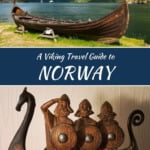From ships to churches to living history, immerse yourself in Norse history and culture with this Viking travel guide to Norway.
Successful TV series such as Vikings, The Last Viking and Norsemen have propelled Norse culture into the mainstream like never before.
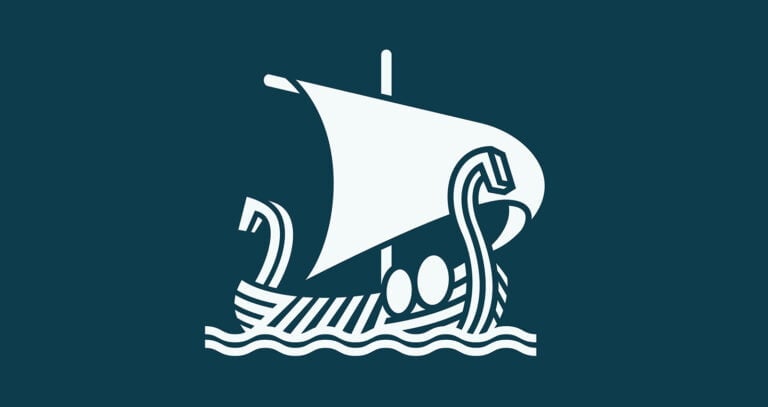
This translates into tourism interest, with tourists looking to learn more about the true stories hidden behind the modern interpretations. Norway is a great choice to start your journey into the past!
An introduction to the Viking Age
The Norsemen were traders, raiders, warriors and explorers. Thanks to excellent sailing and navigational abilities, the Vikings were likely the first Europeans to discover North America.
Based in what we now call Scandinavia, Viking settlements soon sprang up far and wide. But the most impressive Viking history remains back here in Scandinavia.
There's one downside. The biggest sites of interest are spread all over the country, so seeing them all in one trip isn’t feasible for most people. The flipside is that wherever you are in Norway, you won’t be far from a Viking site.
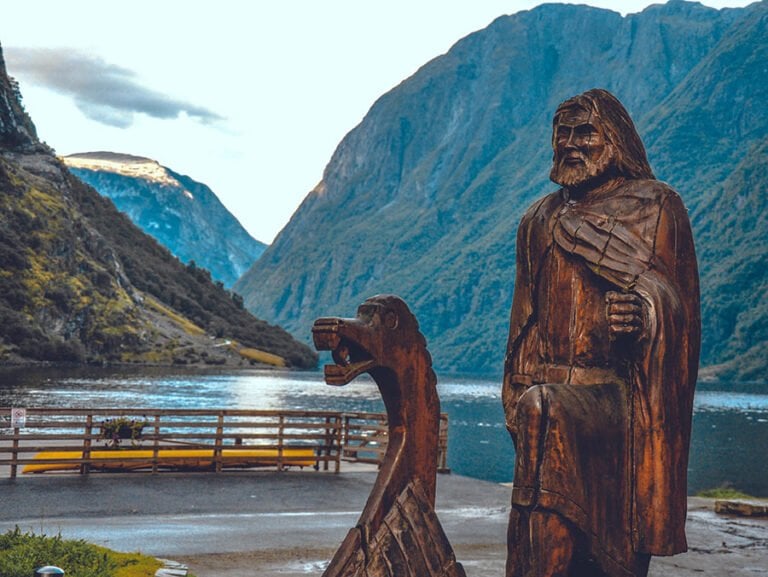
Here are several must-see Viking museums and other relevant sights around Norway.
Viking burial ships
Three Viking burial ships dating back to the 9th century play the starring role at Oslo’s Viking Ship Museum on Bygdøy peninsula. The ships were uncovered along the Oslofjord and the best of the bunch, the Oseberg ship, was found completely intact.
As impressive as the vessels are, arguably more interesting are the other exhibits that take you on an eye-opening journey through everyday Viking life: sleds, beds, wood carvings, tools, and more.
Unfortunately, the museum is now closed for an extensive renovation and extension. It will open in 2025 as the Museum of the Viking Age.
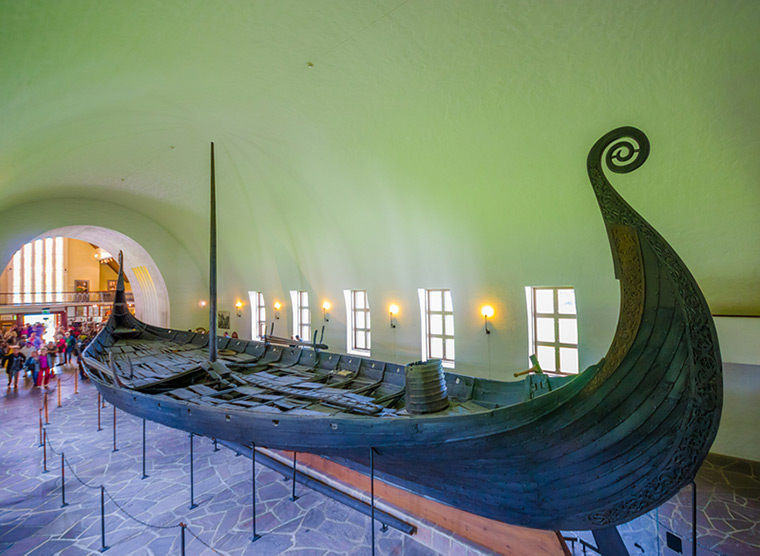
The Oseberg Ship was uncovered near Tønsberg, one of Norway’s oldest cities. Tønsberg is the starting point of the Vestfold Viking Trail, a series of ancient settlements and burial mounds from the Viking Age dotted along the Oslofjord.
While the original Oseberg ship is on display in Oslo, Tønsberg is home to a full-scale replica moored in the harbor. It was built to the original specifications using only tools and techniques from the Viking era.
Sadly, you can’t take a ride in it, as the boat is only taken out of its mooring for special events, but you can enjoy seeing an authentic Viking ship in the water!
The best time to visit is September for the Tønsberg Viking Festival, full of shows, theater, music, food, and an armada of ships setting sail.
Churches and cathedrals
Churches aren’t the first buildings that spring to mind in relation to Vikings, but they do play an important role in the history. Norway became a Christian country in the early Middle Ages, and it was the last Viking kings who made that happen.
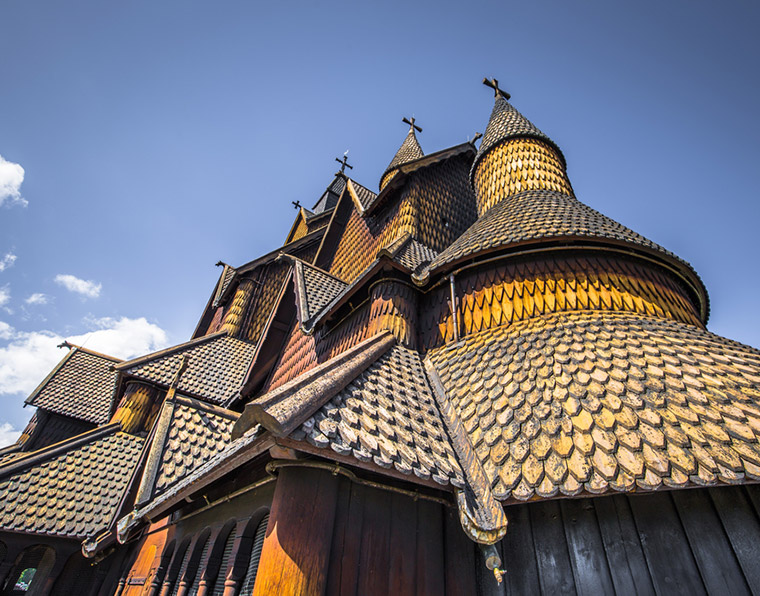
Cathedrals and churches were quickly built all around the country. The architecture of Norway’s distinctive rural stave churches used many of the same techniques that the Vikings used in their shipbuilding.
Although more than 1,000 stave churches once stood across Norway, there are now just 28. Many of the elaborate carvings feature Norse symbols, showing that those building the churches weren’t quite ready to abandon their pagan heritage!
Another religious site of note is Trondheim’s Nidaros Cathedral. It began its life as a simple wooden chapel built to stand over the tomb of Saint Olav, the Viking king who played a big role in the introduction of Christianity and would go on to become the patron saint of Norway.
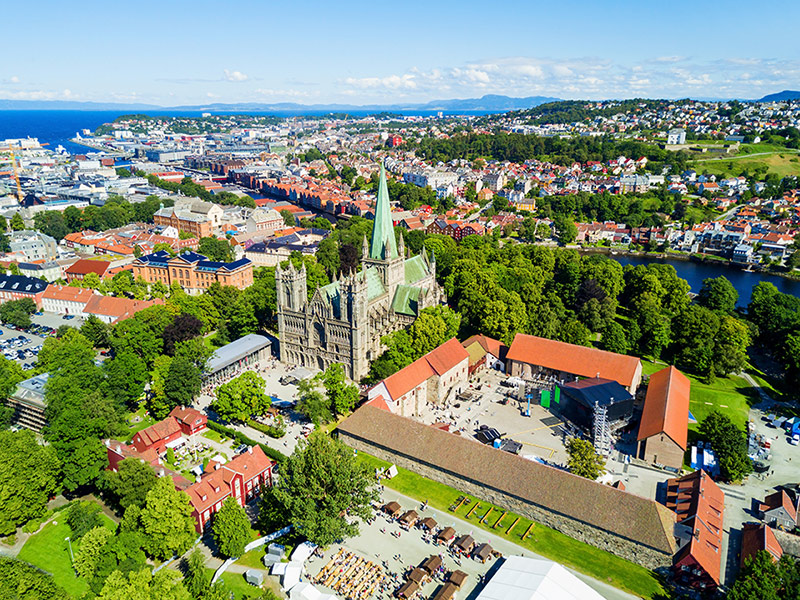
Today, it’s one of the country’s most famous buildings and a major tourist attraction.
Viking experiences
Looking at churches and museums is all well and good, but nothing beats a more hands-on experience to truly get a flavour of the Viking lifestyle. With experiential travel an increasing trend worldwide, Norway has a lot to offer in this area!
Lofotr
Anyone who’s traveled recently on the Hurtigruten will have been offered the opportunity to visit Lofotr Viking Museum. Here on the Lofoten islands, archaeologists found the largest longhouse ever discovered.
A reconstructed longhouse based on the find is now home to demonstrations of handcrafts, woodcarvings, textiles, and an entertaining evening banquet hosted by the chieftain and his wife.
Gudvangen
Another experience close to one of Norway’s top tourist sites is Gudvangen’s Viking Valley. Gudvangen is the end point of the popular cruise along the world-famous Nærøyfjord from Flåm.
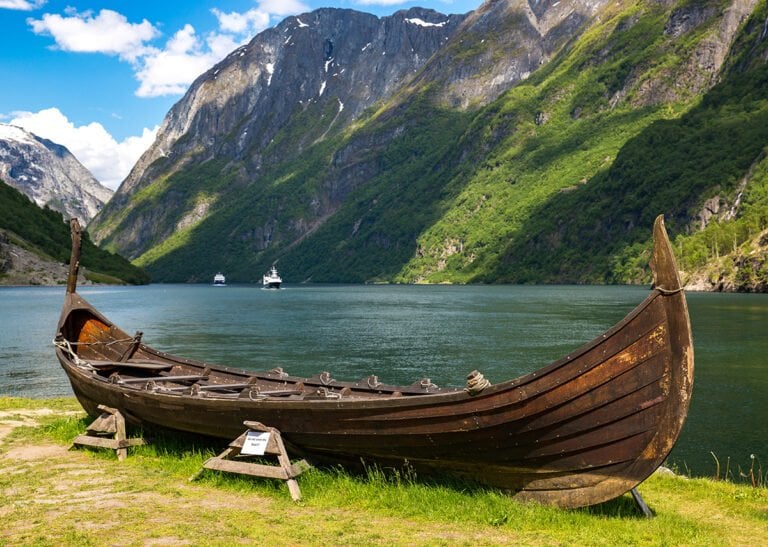
On the shores of the fjord you’ll find Njardarheimr, a Viking village populated by an international community of Viking enthusiasts.
In the middle of July, a festival injects extra life into Njardarheimr with Viking battles and wrestling, concerts, storytelling, archery, ball games and a huge market taking place.
Avaldsnes
There’s plenty of lesser-known experiences in the country too, although many are only open during high season. Avaldsnes Viking Farm near Haugesund is well situated for anyone visiting Bergen or Stavanger.
The farmyard is on a small, forested island. It was here that Olav Tryggvason was said to have drowned a group of wizards 1,000 years ago.
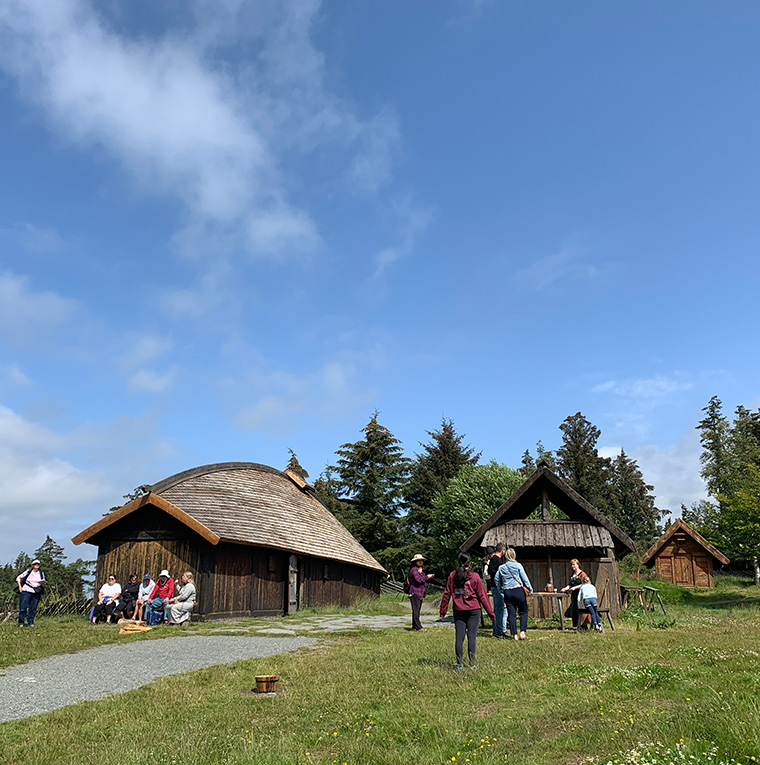
Hyllestad
The Vikings are known for their trading and raids. However, Hyllestad gives a different picture of Viking life. It focuses instead on their skills as stonemasons.
Over the centuries, tens of thousands of millstones were produced at Hyllestad. The stone quarries left behind are among the biggest cultural heritage sites in the country.
Other places and events of note include Kaupang Viking town in Larvik and the colourful, family-friendly Egge Viking Festival. The latter takes place every other year in the summer.
This isn't an exhaustive list of Viking sites and experiences in Norway. But hopefully, it should give you an idea or two to incorporate into your next Norway itinerary.
Beyond Norway
If you want to extend your trip into other countries, consider Scandinavia. The remarkable runestones of Sweden are a great place to start. You can also check out our article on the Vikings in Iceland.

